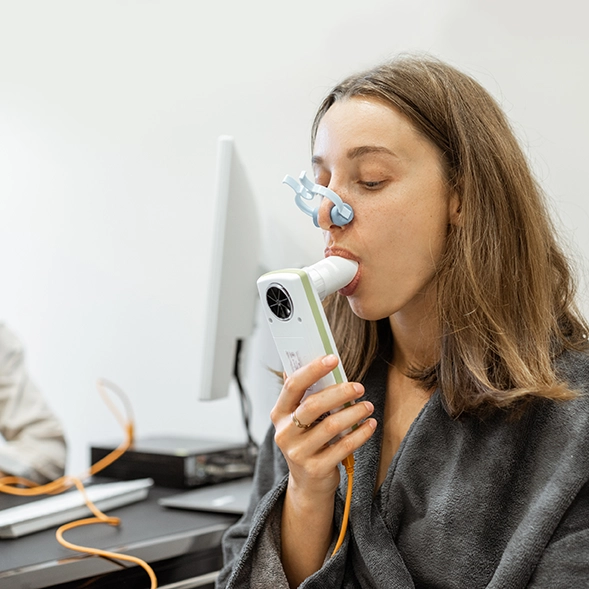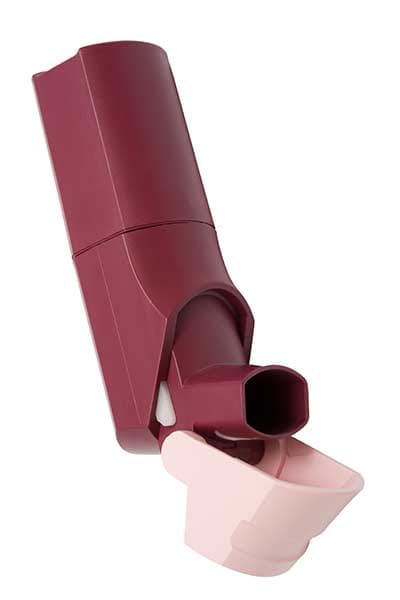Background: The intriguing realm of eosinophil subpopulations has been extensively explored in the context of asthma and numerous other related pathological conditions. Surprisingly, the landscape remains largely uncharted when it comes to understanding the distinct subsets of eosinophils in patients afflicted with chronic obstructive pulmonary disease (COPD). This knowledge gap calls for further investigation to shed light on the intricate interplay between eosinophil subpopulations and the complex pathophysiology of COPD. So, the primary objective of this study was to conduct a comprehensive comparative analysis of eosinophil phenotypes present in both blood samples and induced sputum among patients diagnosed with chronic obstructive pulmonary disease (COPD), asthma, and a control group.
Methods: This observational study encompassed a cohort of individuals diagnosed with chronic obstructive pulmonary disease (COPD) and asthma, both in stable conditions. The COPD group comprised 15 participants, while the asthma group consisted of 14 subjects, all of whom had documented blood eosinophilia of ≥100 cells/µL within the year preceding the study. Also, an 11-member control group was assembled, consisting of subjects devoid of any respiratory ailments. Comprehensive data, including demographic information and clinical records, as well as venous blood and induced sputum samples, were meticulously collected from all participants. To extract leukocytes from the samples, a method utilizing Lymphoprep was employed. These isolated leukocytes were subsequently subjected to staining using antibodies targeting specific surface-binding molecules, namely CD45, CD16, CD125, CD193, CD62L, CD66b, CD11b, and CD14. Within this diverse leukocyte population, eosinophils were identified as SSChi, CD45+, CD16- cells. The levels of IL-5 and eotaxin-3 were quantified within the induced sputum (IS). The data obtained from these analyses are presented in a format depicting the median value along with the interquartile range.
Results: Across the study cohort, the median age differed among the groups, with COPD patients having a median age of 64 years (range: 55–72), asthmatics having a median age of 46 years (range: 39–61), and control subjects having a median age of 58 years (range: 35–63) (p=0.046). In terms of symptom severity, both COPD and asthma patients demonstrated mild-to-moderate symptomatology, as reflected by the COPD Assessment Test scores of 14 points (range: 8–21) and the Asthma Control Test scores of 20 points (range: 14–23.5), respectively. Comparable marker expression patterns were observed on blood eosinophils across the COPD, asthma, and control groups. Notably, the expression levels of CD125, CD193, CD14, and CD62L were consistently higher on blood eosinophils compared to their counterparts in induced sputum, as evident in all three groups (see Figure). In comparing the percentages of specific marker-expressing sputum eosinophils, notable differences were observed among the studied groups. The COPD patients exhibited a significantly higher proportion of CD193+ sputum eosinophils compared to the control subjects (48.1% [29.8–69.3%] vs. 18.7% [11.6-32.8%], respectively, p=0.028). Moreover, a greater percentage of CD66b+ sputum eosinophils was found in individuals with COPD compared to the control group (67.9% [59.9–75.7%] vs. 39.1% [25.6–58.4%], respectively, p=0.036). Interestingly, a decreased level of CD11b+ sputum eosinophils was observed in the COPD group compared to the asthma group (97.9% [96.6–99.1%] vs. 99.4% [98.9–100%], respectively, p=0.009). Significantly, no disparities were observed in the induced sputum (IS) levels of IL-5 (p=0.48) and eotaxin-3 (p=0.17) among the investigated groups. Also, no significant correlations were found between the concentration of IL-5 in IS and the expression of CD125 on sputum or blood eosinophils, as well as between the concentration of eotaxin-3 in sputum and the expression of CD193 on sputum or blood eosinophils.
Conclusions: The findings derived from the present investigation provide compelling evidence indicating distinct polarization profiles exhibited by airway and systemic eosinophils. Notably, the phenotype of eosinophils within the chronic obstructive pulmonary disease (COPD) group exhibited notable variations when compared to both the asthma and control groups. These disparities emphasize the presence of unique characteristics within eosinophils associated with different respiratory conditions.
American Thoracic Society (ATS) 2023 International Conference, 19th May–24th May, 2023, Washington, DC




